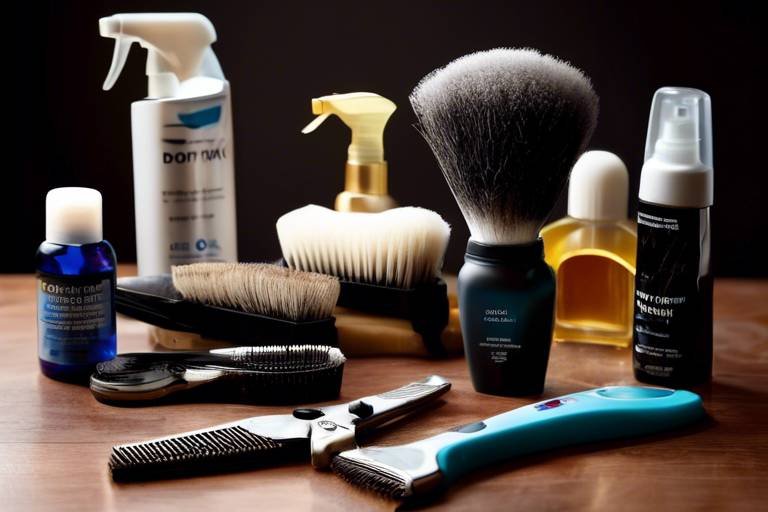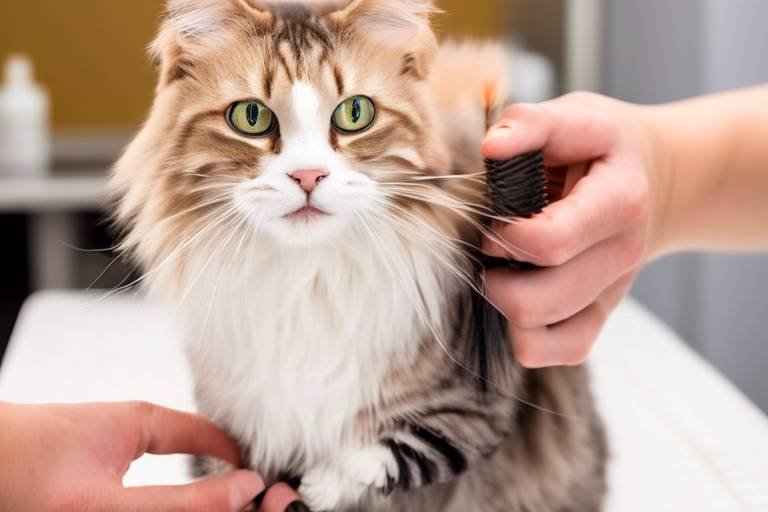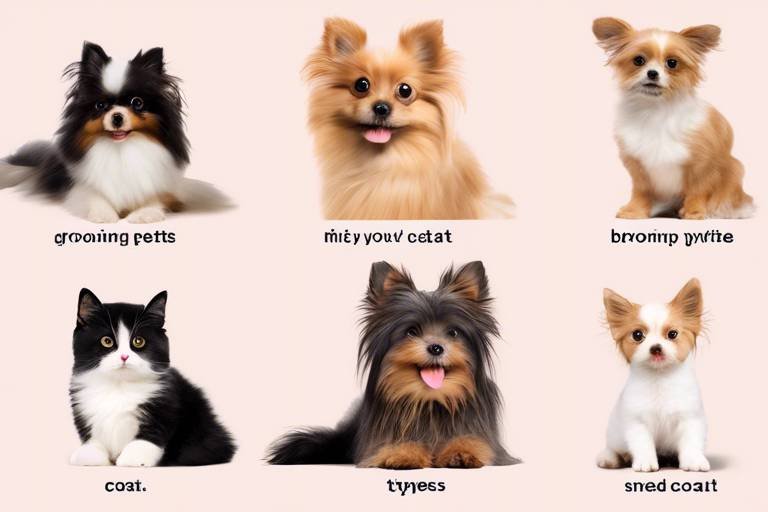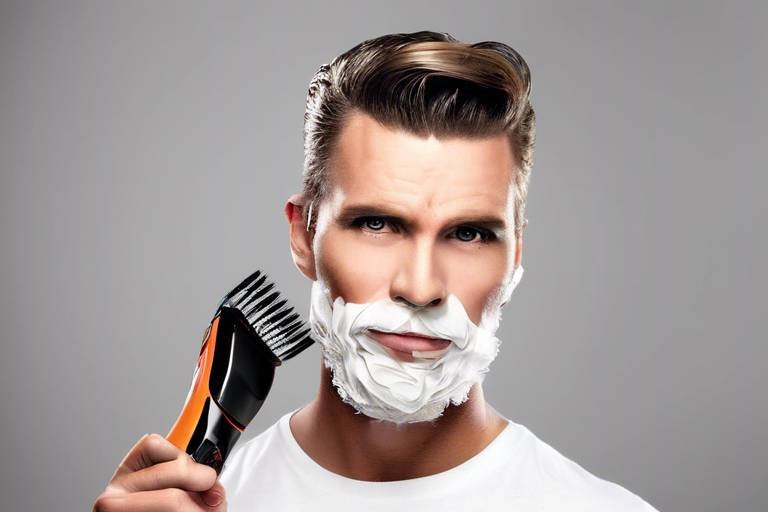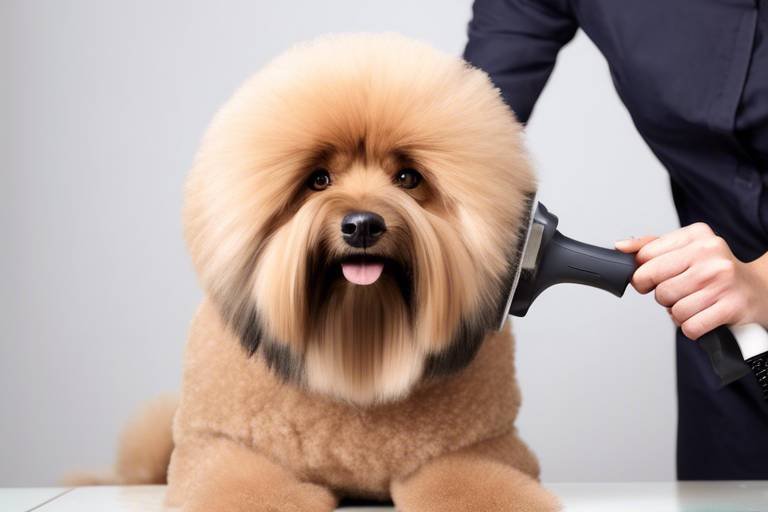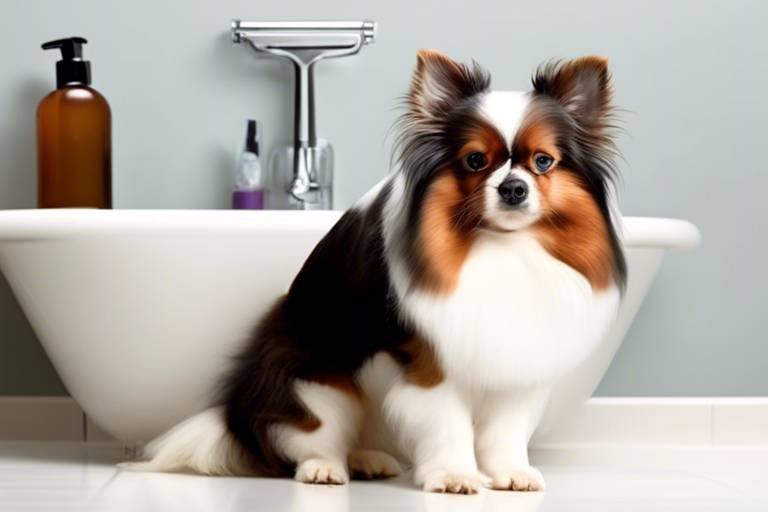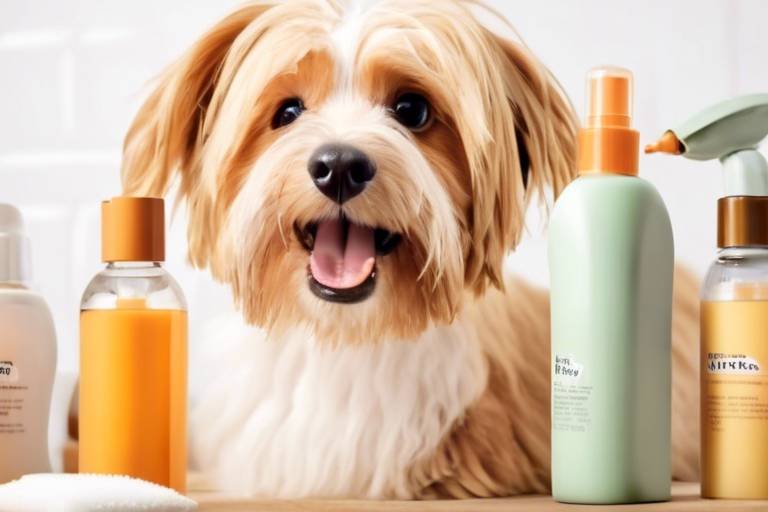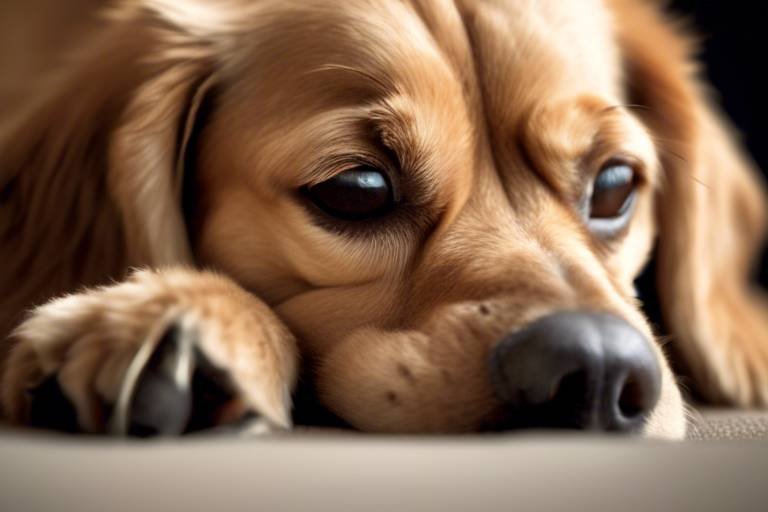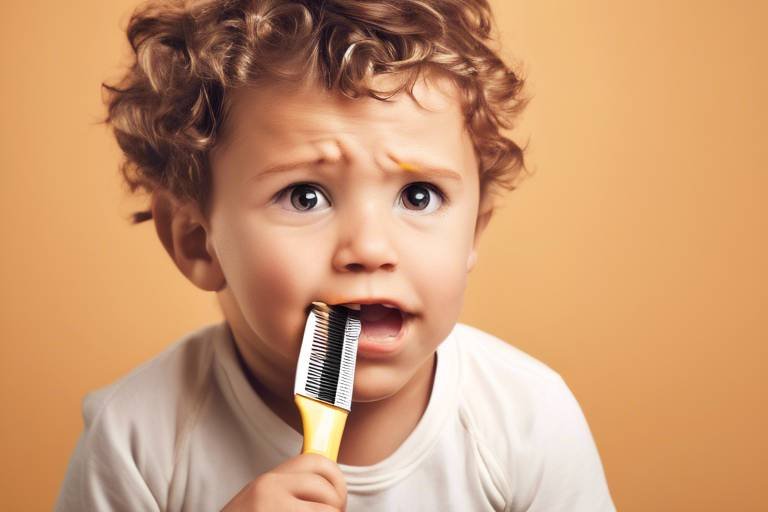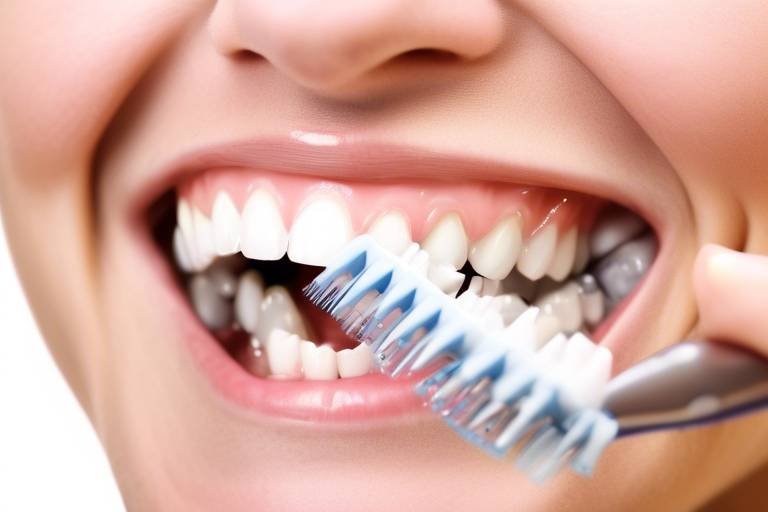How to Properly Clean and Care for Grooming Tools
When it comes to grooming, whether it's for yourself or your furry friends, having the right tools is only half the battle. The other half lies in knowing how to properly clean and care for those tools. Just like a chef wouldn’t use dirty knives, a groomer shouldn't use unkempt brushes or clippers. Keeping your grooming tools in top-notch condition not only enhances your grooming experience but also promotes hygiene. After all, who wants to deal with bacteria or dirt when they're trying to look their best? In this article, we’ll dive deep into the essential tips and techniques for effectively cleaning and maintaining your grooming tools, ensuring they last longer and perform optimally.
Regular cleaning of grooming tools is crucial for maintaining hygiene and preventing the spread of bacteria. Think about it: every time you brush your pet or style your hair, tiny particles of dirt, oils, and even dead skin cells can accumulate on your tools. If you don’t clean them, you're simply transferring those nasties back onto your skin or fur! Understanding the importance of this practice can help you prioritize tool maintenance in your grooming routine. Not only does it keep your tools functioning effectively, but it also ensures that you’re not inadvertently inviting infections or irritations into your grooming process. So, let’s make cleanliness a priority and keep our grooming tools as fresh as a daisy!
Grooming tools come in various forms, including brushes, combs, clippers, and scissors. Each type has specific cleaning and care requirements that should be followed to ensure their effectiveness and durability. For instance, a brush may need a different cleaning method compared to a pair of scissors. Knowing the differences can save you a lot of hassle and money in the long run. Below is a brief overview of common grooming tools:
| Tool Type | Cleaning Frequency | Special Care |
|---|---|---|
| Brushes | After every use | Remove hair and debris |
| Combs | Once a week | Wash and disinfect |
| Clippers | After every use | Oil blades regularly |
| Scissors | After every use | Keep blades sharp |
Brushes and combs require regular cleaning to remove hair and dirt buildup. Knowing the right cleaning methods will help maintain their performance and prevent hair from getting tangled. Have you ever tried to comb your hair with a dirty brush? It’s like trying to eat soup with a fork—frustrating and ineffective! Regularly cleaning your brushes and combs will ensure they glide smoothly through hair without snagging or pulling. So, let’s break down some effective cleaning techniques for these essential tools.
Different brushes may require different cleaning techniques. For example, a bristle brush can be cleaned by using a comb to remove hair, followed by a rinse in warm, soapy water. After rinsing, let it air dry completely. On the other hand, rubber brushes can simply be wiped down with a damp cloth. Understanding how to clean each type effectively can prolong their lifespan and ensure they function properly. It’s like giving your tools a spa day—they’ll thank you for it!
Combs can accumulate residue over time. A simple solution is to soak them in a mixture of warm water and vinegar for about 10-15 minutes. This will help dissolve any buildup. After soaking, use an old toothbrush to scrub away any remaining gunk. Learning proper cleaning techniques will help keep them in optimal condition and free from buildup. Remember, a clean comb is a happy comb!
Clippers and trimmers are essential for precise grooming. Regular maintenance and cleaning are vital to keep these tools functioning smoothly and to avoid potential damage. Just like a car needs regular oil changes to run efficiently, your clippers need proper care to avoid dull blades and overheating. Make it a habit to brush off hair after each use and apply a few drops of oil to the blades to keep them sharp and effective.
Using the right cleaning products is essential for maintaining grooming tools. Specific solutions can help eliminate bacteria and buildup without damaging the tools. You wouldn’t use bleach on your favorite shirt, right? Similarly, choosing the right cleaning products is crucial for your grooming tools. Here are some options:
Natural cleaning solutions can be effective alternatives to commercial products. Options like vinegar, baking soda, and essential oils can do wonders without harsh chemicals. Exploring these options can lead to safer and more eco-friendly grooming practices. Plus, they’re often less expensive and just as effective!
There are many commercial cleaning products designed specifically for grooming tools. These often come with antibacterial properties and are formulated to break down tough residues. Understanding the benefits and proper usage of these products can enhance your cleaning routine. Just remember to read the labels and ensure they’re suitable for the type of tool you’re cleaning!
Proper storage of grooming tools is essential for preventing damage and maintaining cleanliness. Implementing effective storage solutions can ensure your tools remain in good condition for longer. Think of your grooming tools as your little army—they need a safe base to return to after every battle!
A well-organized grooming kit can make it easier to find and access tools. Consider using a dedicated storage box or a drawer with dividers to keep everything in its place. Discovering effective organization techniques can streamline your grooming process and save you time in the long run. After all, who wants to rummage through a cluttered drawer when they’re in a hurry?
Protecting grooming tools from damage during storage is crucial. Learning how to store them safely can help extend their lifespan and maintain their functionality. For instance, keep scissors in a sheath or a protective case to prevent dulling. Similarly, avoid stacking clippers on top of each other, as this can cause scratches or damage. Remember, a little bit of care goes a long way!
- How often should I clean my grooming tools?
It’s best to clean brushes and clippers after every use, while combs can be cleaned once a week. - Can I use regular soap to clean my grooming tools?
While regular soap can work, it’s better to use products specifically designed for grooming tools to ensure they’re properly disinfected. - What’s the best way to store my grooming tools?
Store them in a dry, cool place, preferably in a dedicated storage box or drawer to keep them organized and protected.

Importance of Cleaning Grooming Tools
When it comes to grooming, we often focus on the products we use on our skin or hair, but what about the tools that help us achieve that polished look? Cleaning grooming tools is not just a chore; it's an essential part of maintaining hygiene and ensuring optimal performance. Think about it: every time you brush your hair or trim your beard, you're transferring oils, dirt, and even bacteria from your skin onto these tools. If you neglect to clean them regularly, you're essentially inviting a host of problems into your grooming routine.
Imagine using a dirty brush on freshly washed hair. Not only can it lead to tangled locks, but it can also spread germs that could cause scalp irritation or infections. Regular cleaning of grooming tools helps to prevent such issues, ensuring that you maintain a healthy grooming routine. In fact, research suggests that maintaining cleanliness can significantly reduce the risk of skin irritations and infections, making it a crucial aspect of personal care.
Moreover, let's not forget about the performance of your tools. Over time, hair and product buildup can hinder the effectiveness of your grooming tools. For instance, a clipper with clogged blades won't cut as efficiently, leading to uneven results and frustration. By prioritizing the cleaning of your grooming tools, you can enhance their lifespan and performance, saving you money in the long run.
To put it simply, the importance of cleaning grooming tools can be summarized in a few key points:
- Hygiene: Regular cleaning prevents the spread of bacteria and germs.
- Performance: Clean tools work better, giving you smoother results.
- Longevity: Proper care extends the life of your grooming tools.
- Cost-Effective: Investing time in cleaning saves money on replacements.
In conclusion, cleaning your grooming tools should be a non-negotiable part of your grooming routine. It's a simple yet effective way to ensure that you not only look good but also feel good. So, the next time you pick up your favorite brush or clipper, take a moment to consider its cleanliness. Your skin and hair will thank you!
Q: How often should I clean my grooming tools?
A: It depends on the type of tool and how often you use it. As a general rule, brushes and combs should be cleaned weekly, while clippers and scissors may require cleaning after each use.
Q: Can I use regular soap to clean my grooming tools?
A: While regular soap can help, it's best to use products specifically designed for grooming tools to ensure effective cleaning without damage.
Q: Are there any natural alternatives for cleaning grooming tools?
A: Yes! Solutions like vinegar and baking soda can be effective for cleaning and disinfecting your tools in an eco-friendly way.
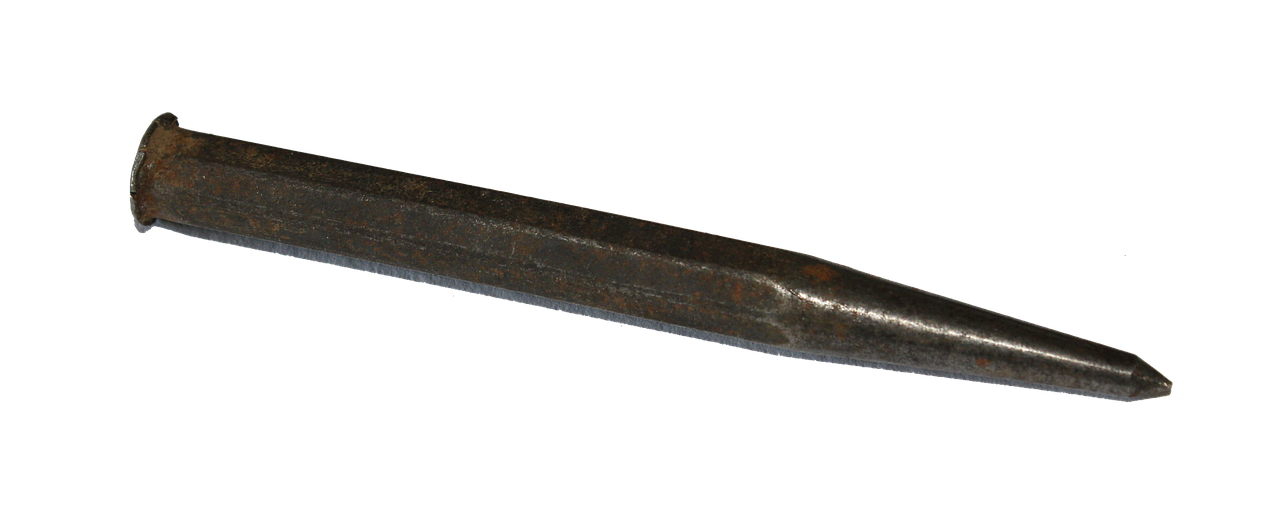
Types of Grooming Tools
When it comes to grooming, having the right tools is just as important as knowing how to use them. Grooming tools are not a one-size-fits-all category; they come in various forms, each serving a unique purpose in maintaining your appearance and hygiene. Understanding the different types of grooming tools can help you choose the right ones for your needs, ensuring that you achieve the best results. Let's dive into the essential categories of grooming tools that every grooming kit should include.
First up, we have brushes and combs. These are the foundational tools in any grooming arsenal. Brushes are typically used for detangling hair and distributing natural oils, while combs are great for styling and smoothing out hair. Brushes can vary in type, such as paddle brushes, round brushes, and vent brushes, each designed for specific hair types and styles. Combs, on the other hand, come in different sizes and teeth configurations, making them versatile for various grooming tasks.
Next, we have clippers and trimmers. These tools are essential for anyone looking to maintain a neat and tidy appearance. Hair clippers are designed for cutting longer hair, while trimmers are perfect for detailing and edging. Regular cleaning and maintenance of these tools are crucial to ensure they operate smoothly and last a long time. If you’ve ever experienced snagging hair or uneven cuts, you know how important it is to keep these tools in top condition.
Then, there are scissors, which are indispensable for precise cutting and styling. Whether you're snipping away split ends or creating layers, having a good pair of haircutting scissors can make all the difference. Just like clippers, scissors require proper care to maintain their sharpness and effectiveness.
Other grooming tools you might encounter include nail clippers, tweezers, and sponges. Nail clippers are essential for keeping your nails neat and tidy, while tweezers are perfect for those pesky stray hairs. Sponges, on the other hand, play a significant role in skin care routines, helping to exfoliate and cleanse the skin. Each of these tools has its own cleaning and maintenance requirements, which are vital for ensuring their longevity and effectiveness.
In summary, understanding the different types of grooming tools and their specific purposes is crucial for effective grooming. When you know what each tool is designed for, you can make informed decisions on which ones to include in your grooming kit. This knowledge not only enhances your grooming experience but also promotes better hygiene and care for your tools.
- What is the best way to clean grooming tools? Regularly remove hair and debris, then wash with warm soapy water or a suitable cleaning solution.
- How often should I clean my grooming tools? It's best to clean your tools after every use to maintain hygiene and performance.
- Can I use regular household cleaners on grooming tools? Some household cleaners can be too harsh; it's better to use products specifically designed for grooming tools.
- How should I store my grooming tools? Store them in a dry, clean place, preferably in an organized kit to prevent damage and contamination.
Brushes and Combs
When it comes to maintaining a well-groomed appearance, are your trusty sidekicks. They help detangle knots, distribute natural oils, and keep your hair looking fabulous. However, many people overlook the importance of regularly cleaning these grooming tools. Just like your hair, brushes and combs can accumulate dirt, oil, and product residue over time. If you don’t clean them, you might as well be using a dirty sponge on your skin! So, let's dive into why cleaning your brushes and combs is essential and how to do it effectively.
First and foremost, let's talk about the hygiene factor. Brushes and combs can harbor bacteria, dead skin cells, and other nasties that can lead to scalp issues or even skin irritations. Imagine brushing your hair with a tool that's been collecting grime for weeks—yikes! Regular cleaning helps prevent the buildup of these harmful substances, ensuring that your grooming routine is not only effective but also safe.
Now, you might be wondering, "How often should I clean my brushes and combs?" The answer largely depends on how frequently you use them. If you’re a daily user, aim for a thorough cleaning at least once a week. For those who use them less frequently, a monthly deep clean should suffice. To make things easier, here’s a quick overview of the cleaning process:
| Tool Type | Cleaning Frequency | Cleaning Method |
|---|---|---|
| Hair Brushes | Weekly | Remove hair, wash with soap and water, rinse, and air dry |
| Combs | Weekly | Soak in warm soapy water, scrub, rinse, and air dry |
To clean your brushes effectively, start by removing any hair strands caught in the bristles. You can use a comb or your fingers to pull them out gently. Once you've removed the hair, it’s time to wash the brush. Fill a bowl with warm water and add a few drops of mild shampoo or dish soap. Swirl the brush in the soapy water, being careful not to soak the handle or base, especially if it’s made of wood. Rinse thoroughly under running water and allow it to air dry bristle-side down to prevent water from seeping into the base.
Combs, on the other hand, often require a slightly different approach. Soaking them in warm, soapy water can help loosen any buildup. After a few minutes, use a soft toothbrush or a cloth to scrub between the teeth of the comb, ensuring all residue is removed. Rinse thoroughly and let them dry on a clean towel.
In summary, keeping your brushes and combs clean is not just about aesthetics; it’s about enhancing your grooming experience and promoting scalp health. By incorporating regular cleaning into your routine, you can ensure that these essential tools remain effective and hygienic, giving you the best results every time you groom your hair.
- How often should I clean my brushes and combs? It’s recommended to clean them weekly if used daily, or monthly for occasional use.
- Can I use any soap to clean my grooming tools? It’s best to use a mild shampoo or dish soap to avoid damaging the tools.
- What happens if I don't clean my brushes and combs? Over time, they can accumulate dirt, oil, and bacteria, which can lead to scalp issues and affect hair health.
Cleaning Techniques for Brushes
When it comes to grooming tools, brushes are often the unsung heroes. They help detangle, smooth, and style our hair, but they also collect dirt, oil, and hair over time. To keep your brushes in tip-top shape, it's essential to adopt effective cleaning techniques that not only enhance their performance but also extend their lifespan. Think of cleaning your brushes like giving them a refreshing spa day; they deserve it!
The first step in cleaning your brushes is to remove any hair that has accumulated. You can do this by using your fingers or a comb to gently pull out the strands. For stubborn hair, a pair of scissors can help you cut through the tangles. Once you've cleared away the hair, it's time to give your brushes a thorough wash.
For most brushes, a simple solution of warm water and a few drops of mild shampoo or dish soap will do the trick. Soak the bristles in this mixture for about 10-15 minutes. This process is akin to letting your favorite sweater soak in a warm bath; it helps loosen up any grime. After soaking, gently scrub the bristles with an old toothbrush or a soft cloth to remove any remaining buildup. Rinse the brush thoroughly under running water, ensuring that all soap is washed away. Remember, just like you wouldn’t want soap residue on your skin, your brushes shouldn’t have any lingering soap either!
For brushes with natural bristles, you might want to take extra care. These brushes can be more delicate, so it's best to avoid soaking them for too long. Instead, you can use a damp cloth to wipe the bristles clean. If you notice any stubborn residue, a mixture of vinegar and water can be a great natural solution to break down the buildup without damaging the bristles.
After cleaning, it’s crucial to let your brushes dry properly. Place them bristle-side down on a clean towel to avoid moisture getting trapped in the base. This step is vital because moisture can lead to mold and bacteria growth, defeating the purpose of cleaning in the first place!
Lastly, consider how often you should clean your brushes. A good rule of thumb is to clean them every two weeks. However, if you use your brushes daily or they are exposed to a lot of product, you might want to increase the frequency. Regular cleaning not only keeps your brushes effective but also enhances your overall grooming experience.
In summary, keeping your brushes clean is not just about aesthetics; it’s about hygiene and performance. By following these simple cleaning techniques, you can ensure that your brushes remain in great condition, ready to help you look your best every day!
- How often should I clean my grooming brushes? It's recommended to clean them every two weeks, or more frequently if they're used daily.
- Can I use any soap to clean my brushes? It's best to use a mild shampoo or dish soap to avoid damaging the bristles.
- What should I do if my brush has a lot of product buildup? Soak the brush in warm water mixed with a few drops of vinegar to help break down the buildup.
- Is it necessary to dry my brushes upside down? Yes, drying them bristle-side down helps prevent moisture from being trapped, which can lead to mold.
Cleaning Techniques for Combs
Combs are often overlooked when it comes to grooming tool maintenance, but they play a significant role in our daily routines. Over time, they can accumulate dirt, oil, and product residue, which can not only affect their performance but also impact the health of your hair and scalp. To keep your combs in top shape, it's essential to adopt effective cleaning techniques. First, start by removing any hair strands that may be tangled in the teeth of the comb. You can use your fingers or a pair of tweezers to gently pull out the hair, ensuring that you don't damage the comb in the process.
Once you've removed the hair, it's time to give your comb a thorough wash. Fill a bowl or sink with warm water and add a few drops of mild shampoo or dish soap. Submerge the comb in the soapy water and let it soak for about 10-15 minutes. This soaking process helps to loosen any stubborn buildup. After soaking, use a soft-bristled toothbrush or a similar brush to gently scrub the teeth of the comb, paying special attention to the areas where residue tends to accumulate.
Rinse the comb under warm running water to wash away the soap and any loosened debris. Make sure to rinse thoroughly, as any soap residue left behind can lead to buildup the next time you use it. After rinsing, shake off excess water and lay the comb flat on a clean towel to air dry. It's important to allow your comb to dry completely before storing it away, as moisture can promote the growth of bacteria and mold.
For those who prefer a more natural approach, you can also use a mixture of equal parts vinegar and water as a cleaning solution. This method not only cleans but also helps to disinfect the comb. Simply soak the comb in the vinegar solution for a few minutes, scrub with a brush, rinse, and dry as mentioned earlier. Regular cleaning of your combs, ideally every few weeks, will keep them in excellent condition and ensure that they perform effectively during your grooming sessions.
In summary, keeping your combs clean is a simple yet crucial part of your grooming routine. By following these techniques, you can ensure that your combs remain free from buildup and ready for use whenever you need them. Remember, a clean comb is not just about aesthetics; it's about promoting healthy hair and scalp hygiene!
- How often should I clean my combs? It's recommended to clean your combs every few weeks, or more frequently if you use styling products regularly.
- Can I use any type of soap to clean my combs? Mild shampoos or dish soaps are ideal as they effectively remove buildup without damaging the comb material.
- What if my comb is made of wood? For wooden combs, avoid soaking them in water for long periods. Instead, use a damp cloth with mild soap to wipe them down.
- Is vinegar safe for all comb materials? While vinegar is a natural cleaner, it's best to check the manufacturer's instructions, especially for combs made of delicate materials.
Clippers and Trimmers
When it comes to grooming, are your best friends. These powerful tools allow you to achieve that perfect look, whether you're trimming your hair, grooming your beard, or giving your pet a fresh cut. However, just like any other tool, they require regular maintenance and cleaning to ensure they operate smoothly and effectively. Neglecting to care for your clippers and trimmers can lead to dull blades, uneven cuts, and even potential damage that could mean costly repairs or replacements.
First and foremost, it’s essential to understand that clippers and trimmers can accumulate hair, dirt, and oil over time. This buildup not only affects their performance but can also harbor bacteria, which is a big no-no for hygiene. So, how do you keep them in tip-top shape? Let me break it down for you.
After each use, take a moment to clean the blades. You can do this by using a small brush, often included with the clippers, to remove hair and debris. Additionally, a few drops of clipper oil can work wonders. Apply the oil to the blades while they are running—this not only lubricates but also helps to dislodge any stubborn hair stuck in the mechanism. Remember, a well-oiled clipper is a happy clipper!
Another critical aspect of maintaining your clippers and trimmers is regular deep cleaning. This should be done every few uses or at least once a month, depending on how often you groom. Start by disassembling the clipper head, if possible, and soaking the blades in warm, soapy water. After a few minutes, use a soft brush to scrub away any remaining residue. Rinse them thoroughly and let them air dry completely before reassembling. This process not only keeps your tools clean but also extends their lifespan significantly.
Now, let’s not forget about storage. Proper storage is crucial for preventing damage to your clippers and trimmers. After cleaning, ensure that they are stored in a cool, dry place, preferably in a protective case or pouch. Avoid leaving them in damp areas or exposing them to extreme temperatures, as this can lead to rust and wear. A well-organized grooming kit can help you keep track of your tools and ensure they are always ready for action.
To sum it up, taking care of your clippers and trimmers involves a few straightforward steps:
- Clean the blades after each use.
- Deep clean the clippers regularly.
- Lubricate the blades with clipper oil.
- Store them properly to avoid damage.
By following these simple maintenance tips, you can ensure that your clippers and trimmers remain effective and durable, providing you with the best grooming experience possible. Remember, a little care goes a long way, and your grooming tools will thank you with every precise cut!
Q: How often should I clean my clippers and trimmers?
A: It's best to clean them after each use and perform a deep clean at least once a month.
Q: Can I use regular soap to clean my grooming tools?
A: Yes, but make sure to rinse them thoroughly and dry them completely to prevent rust.
Q: What type of oil should I use for my clippers?
A: Use clipper oil specifically designed for grooming tools, as it helps to lubricate and protect the blades.
Q: How should I store my clippers and trimmers?
A: Store them in a cool, dry place, preferably in a protective case to avoid damage and dust accumulation.
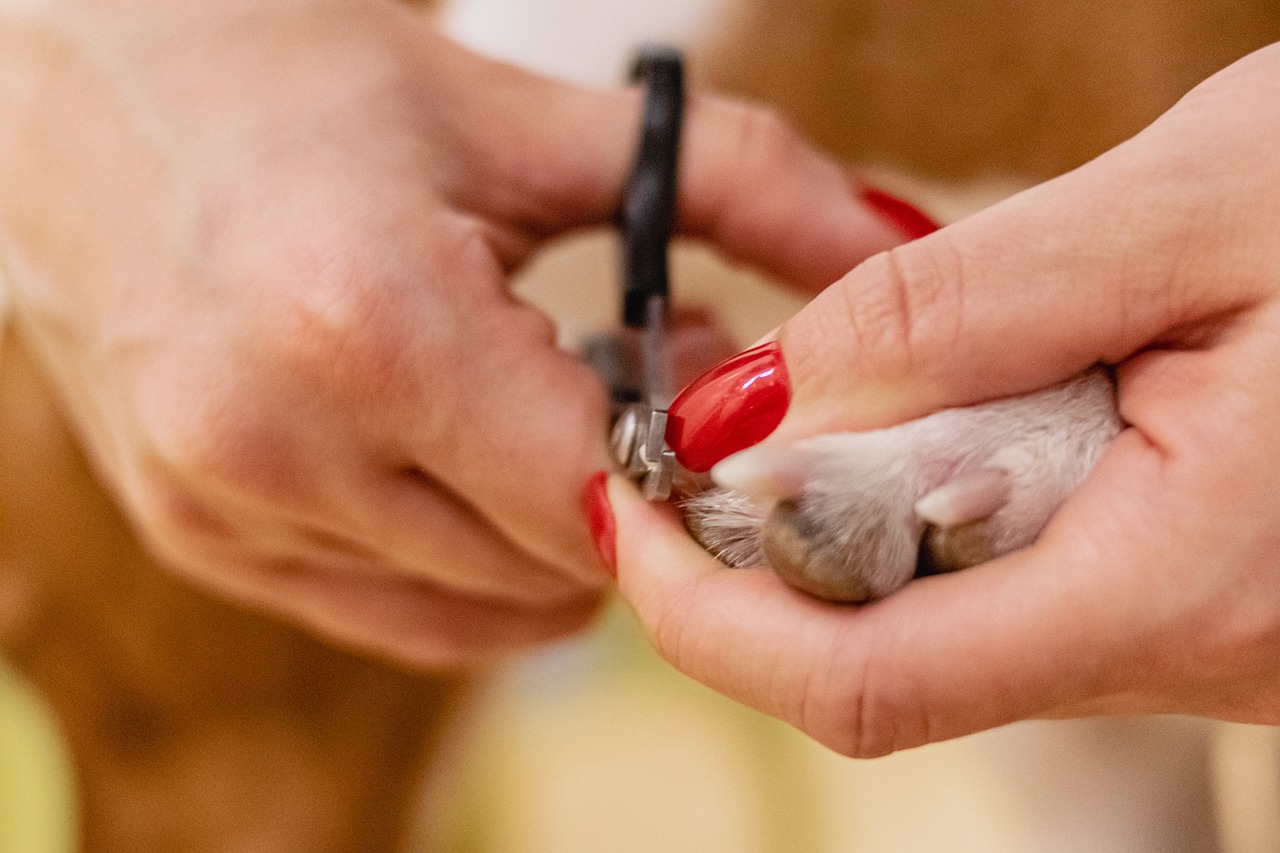
Best Cleaning Products
When it comes to keeping your grooming tools in pristine condition, using the right cleaning products is essential. Not all cleaning solutions are created equal, and choosing the wrong one can lead to damage or ineffective cleaning. To help you navigate this landscape, we’ll explore both natural cleaning solutions and commercial cleaning products, ensuring your tools stay hygienic and functional.
First off, let's talk about natural cleaning solutions. These are often made from ingredients you might already have in your home, making them a convenient and eco-friendly choice. For instance, a simple mix of water and vinegar can be a powerful cleaner that cuts through grime and disinfects at the same time. You can also use baking soda, which acts as a gentle abrasive to scrub away stubborn residue without scratching your tools. Here’s a quick recipe you can try:
| Ingredient | Purpose |
|---|---|
| 1 part Water | Base for cleaning solution |
| 1 part White Vinegar | Disinfectant |
| 1 tablespoon Baking Soda | Gentle abrasive |
Mix these ingredients in a spray bottle, and you have a versatile cleaner that can tackle various grooming tools. Just remember to test it on a small area first to ensure it won’t damage your tools.
On the other hand, commercial cleaning products are specifically formulated for grooming tools, providing a level of cleaning power that natural solutions might not match. Many of these products contain antibacterial agents that effectively kill germs and bacteria, making them an excellent choice for maintaining hygiene. When selecting a commercial product, look for those that are free from harsh chemicals, as these can degrade the quality of your tools over time. Popular brands often feature products designed for specific tools, such as clippers or scissors, ensuring optimal care.
When using commercial cleaning products, it’s crucial to follow the manufacturer’s instructions for usage. This not only maximizes their effectiveness but also helps in preventing any potential damage to your tools. For instance, some products may require rinsing, while others can be wiped off directly. Always read the label!
In conclusion, whether you opt for natural cleaning solutions or commercial products, the key is consistency. Regularly cleaning your grooming tools with the right products will not only enhance their performance but also extend their lifespan, making your grooming routine more efficient and enjoyable.
- How often should I clean my grooming tools? It’s best to clean them after each use to prevent buildup of hair and bacteria.
- Can I use dish soap to clean my grooming tools? Yes, mild dish soap diluted in water can be effective, but make sure to rinse thoroughly.
- Are natural cleaning products as effective as commercial ones? They can be effective for regular maintenance, but for heavy-duty cleaning, commercial products may be more efficient.
Natural Cleaning Solutions
When it comes to cleaning grooming tools, many people often overlook the power of natural cleaning solutions. Not only are these alternatives effective, but they also offer a safer and more eco-friendly option compared to harsh commercial products. Imagine being able to clean your brushes, combs, and clippers using ingredients that you likely already have in your kitchen! This approach not only saves you money but also reduces your exposure to potentially harmful chemicals.
One of the most popular natural cleaning solutions is a simple mixture of vinegar and water. Vinegar is known for its antibacterial properties, making it an excellent choice for disinfecting grooming tools. To create this solution, mix equal parts of white vinegar and water in a bowl. Soak your tools in this mixture for about 10-15 minutes, then scrub them gently with a soft brush to remove any buildup. Rinse thoroughly with warm water and let them air dry. This method is particularly effective for brushes and combs, as it helps to eliminate odors and restore shine.
Another fantastic natural cleaner is baking soda. This versatile ingredient can be used to remove stubborn grime and residue from your grooming tools. To use baking soda, create a paste by mixing it with a small amount of water. Apply this paste to the areas that need cleaning, and let it sit for a few minutes before scrubbing with a soft brush. Rinse well and dry your tools afterward. Not only does baking soda clean effectively, but it also neutralizes odors, leaving your grooming tools smelling fresh.
For those who prefer a more aromatic approach, consider using essential oils. Oils such as tea tree oil or lavender oil have natural antibacterial properties and can add a pleasant scent to your grooming tools. Simply add a few drops of your chosen essential oil to your vinegar-water solution or baking soda paste. This not only enhances the cleaning process but also provides a calming aroma that can make your grooming routine feel more luxurious.
In addition to these solutions, it's essential to remember that regular maintenance is key. After each use, take a moment to wipe down your tools with a cloth dampened with your natural cleaning solution. This simple step can prevent the buildup of dirt and bacteria, ensuring that your grooming tools stay in top shape for longer.
In summary, natural cleaning solutions are not only effective but also safe and easy to use. By incorporating ingredients like vinegar, baking soda, and essential oils into your cleaning routine, you can maintain your grooming tools in a way that is both environmentally friendly and budget-conscious. So why not give these natural alternatives a try? Your tools—and the environment—will thank you!
Q: Are natural cleaning solutions as effective as commercial products?
A: Yes, many natural cleaning solutions, such as vinegar and baking soda, have proven antibacterial properties and can effectively clean grooming tools.
Q: Can I use essential oils directly on my grooming tools?
A: It's best to dilute essential oils in a carrier solution, like vinegar or water, to avoid any potential damage to your tools.
Q: How often should I clean my grooming tools?
A: Ideally, you should clean your grooming tools after every use to prevent buildup and maintain hygiene.
Q: Is it safe to use vinegar on all types of grooming tools?
A: While vinegar is generally safe for most grooming tools, it's always a good idea to check the manufacturer's recommendations for specific materials.
Commercial Cleaning Products
When it comes to keeping your grooming tools in tip-top shape, can be a game-changer. These specialized solutions are designed to tackle the unique challenges posed by various grooming implements, ensuring they remain hygienic and effective. Think of these products as the superheroes of your grooming kit—each one equipped with specific powers to fight grime, bacteria, and buildup that can accumulate over time.
One of the most significant advantages of using commercial cleaning products is their ability to eliminate bacteria without damaging your tools. Many of these formulations are designed to be gentle yet effective, making them suitable for a wide range of materials, including plastic, metal, and rubber. For instance, a good clipper cleaner not only disinfects but also lubricates the blades, ensuring they glide smoothly through hair without snagging or pulling. This is crucial for maintaining the performance of your clippers and trimmers, as a well-maintained tool can make all the difference in achieving a flawless grooming result.
When selecting a commercial cleaning product, it’s essential to consider the type of grooming tool you’re using. For example, some products are specifically formulated for scissors, while others are better suited for brushes and combs. Here’s a quick overview of some popular types of commercial cleaning products:
| Product Type | Best For | Key Benefits |
|---|---|---|
| Clipper Cleaner | Clippers and trimmers | Disinfects, lubricates, and prevents rust |
| Brush Cleaner | Brushes and combs | Removes hair, dirt, and product buildup |
| Scissor Cleaner | Scissors | Removes debris and maintains sharpness |
Using these products is straightforward. Typically, you’ll want to follow the manufacturer's instructions, which often involve spraying the cleaner onto the tool and wiping it down with a cloth or brush. Some products may require a soak or a more intensive cleaning process, so it's always a good idea to read the label carefully. Remember, just like you wouldn’t use a sledgehammer to crack a nut, you shouldn’t use a harsh cleaner on delicate tools. Choosing the right product can save you money in the long run by extending the life of your grooming tools.
In addition to keeping your tools clean, many commercial cleaning products are designed with eco-friendliness in mind. If you're concerned about the impact of your grooming routine on the environment, look for biodegradable or non-toxic options. These products can effectively clean your tools while being gentle on the planet.
In conclusion, incorporating commercial cleaning products into your grooming routine is not just about keeping your tools looking shiny and new; it’s about ensuring they perform at their best. By selecting the right products and using them correctly, you can enhance your grooming experience and maintain the longevity of your tools. So next time you’re shopping for grooming supplies, don’t overlook the power of a good cleaning product—it could be the secret weapon you didn’t know you needed!
- How often should I clean my grooming tools? It's recommended to clean your tools after every use to prevent buildup and maintain hygiene.
- Can I use regular household cleaners on my grooming tools? It's best to use products specifically designed for grooming tools to avoid damaging them.
- Are natural cleaning solutions effective? Yes, many natural solutions can be effective, but they may not be as potent as commercial products for heavy-duty cleaning.
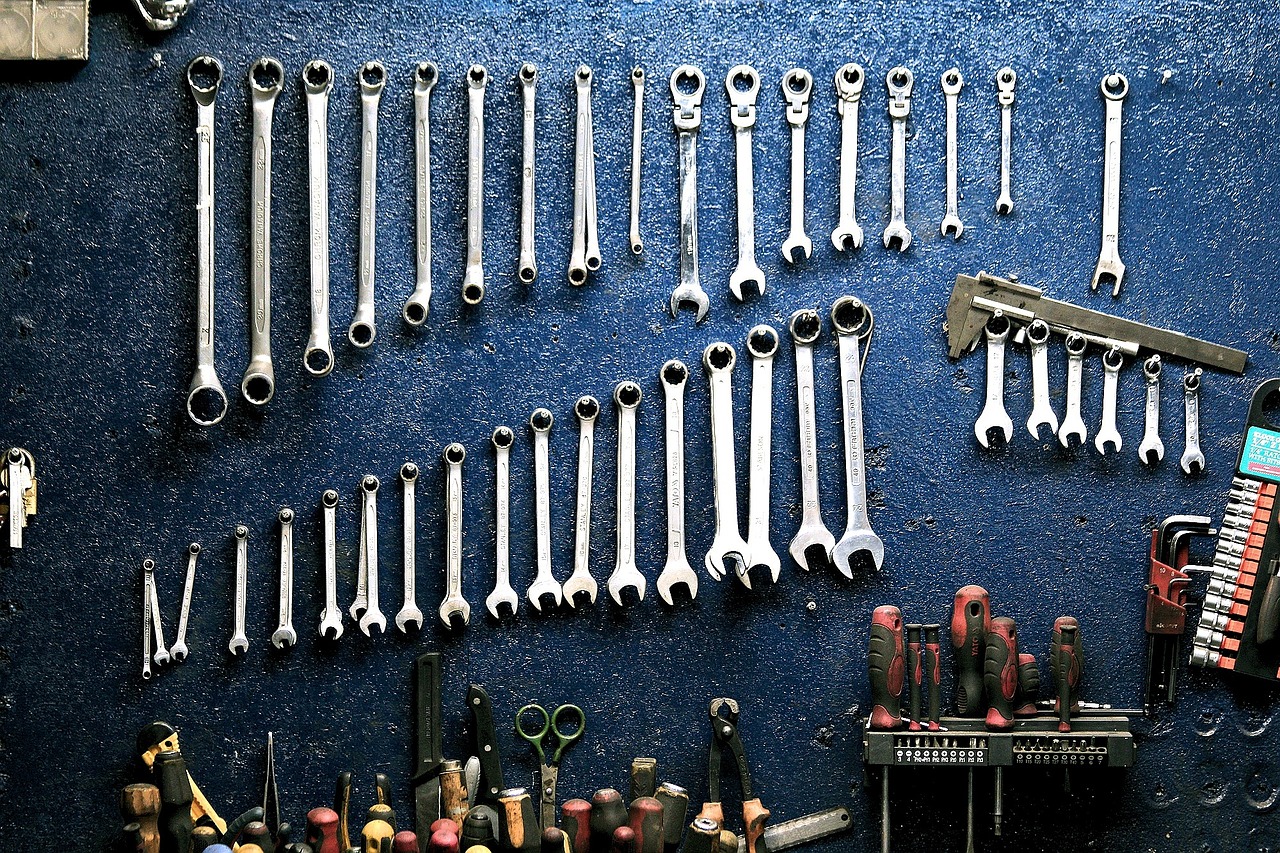
Storage Tips for Grooming Tools
When it comes to grooming tools, proper storage is just as important as cleaning. After all, you wouldn’t want to toss your expensive clippers and brushes into a drawer where they can get damaged or dirty, right? Think of your grooming tools as your trusty sidekicks; they deserve a little TLC too! Proper storage not only keeps your tools in top shape but also makes your grooming routine more efficient. Imagine opening your grooming kit and everything is neatly arranged, ready for action. Sounds great, doesn’t it?
To start, consider using a dedicated grooming kit or organizer. A well-designed grooming kit can keep your tools separated and protected. Look for kits with compartments that can accommodate various tools like brushes, scissors, and clippers. This way, you won’t have to dig around looking for that one specific comb you always use. Plus, it helps prevent tools from clanking against each other, which can lead to scratches or even breakage.
Another key aspect of storage is ensuring that your grooming tools are protected from moisture. Moisture can lead to rust, especially in metal tools. If you’re storing your tools in a bathroom, consider using a moisture-absorbing product or a sealed container. Alternatively, you could store them in a dry, cool place like a bedroom or a designated grooming station. Just imagine pulling out a perfectly dry and clean tool every time you groom!
Additionally, make sure to keep your tools out of direct sunlight. Sun exposure can degrade the materials over time, making them less effective. If you have a designated grooming area, consider placing your tools in a drawer or cabinet where they are shielded from sunlight. For those who like to display their tools, opt for a decorative box that can keep them safe while still looking stylish.
Lastly, don’t forget to regularly check your storage area for any signs of wear and tear. If your grooming kit is starting to show its age, it might be time to invest in a new one. After all, your tools deserve the best! A good storage solution can significantly extend the lifespan of your grooming tools, ensuring they remain effective and hygienic. So, treat your grooming tools with respect, and they will return the favor by performing at their best every time you need them.
- How often should I clean my grooming tools? It’s best to clean your grooming tools after each use to prevent bacteria buildup.
- What is the best way to store my grooming tools? Use a dedicated grooming kit with compartments and keep them in a dry, cool place away from direct sunlight.
- Can I use regular household cleaners on my grooming tools? It’s better to use products specifically designed for grooming tools to avoid damaging them.
- How can I prevent rust on my metal grooming tools? Store them in a dry area and consider using a moisture-absorbing product to keep humidity levels low.
Organizing Your Grooming Kit
Keeping your grooming kit organized is not just about aesthetics; it’s about enhancing efficiency and making your grooming routine as smooth as possible. Imagine rummaging through a chaotic jumble of tools, only to find that your favorite brush is buried under a pile of other items. Frustrating, right? To avoid this, a well-structured grooming kit can save you time and energy, allowing you to focus on what really matters—looking and feeling your best!
First, consider the layout of your grooming kit. Start by categorizing your tools based on their type and function. For example, keep all your brushes and combs together, while clippers and scissors can have their own section. This way, you can easily grab what you need without sifting through an avalanche of products. You can use small containers or pouches to separate these categories. Not only does this help in finding tools quickly, but it also prevents any accidental damage.
Next, think about accessibility. Place the items you use most frequently in easily reachable spots. For instance, if you clip your hair regularly, keep your clippers at the top of your kit or in a dedicated space. Meanwhile, tools that you use less often, like specialty brushes or combs, can be stored in the back or in a separate compartment. This organization strategy helps you maintain a fluid grooming routine without unnecessary interruptions.
Another important aspect of organization is cleanliness. Regularly check your grooming kit for any dirt, hair, or product residue that may accumulate over time. A quick wipe down with a cloth can go a long way in maintaining hygiene. You might even consider using a small, portable vacuum to remove hair that tends to cling to the surfaces. Keeping your tools clean not only ensures their longevity but also enhances your grooming experience.
Lastly, if you have a variety of grooming products, consider creating a labeling system. You can use small labels or tags to mark different sections of your kit. For example, one section could be labeled "Hair Care," while another could say "Skin Care." This simple addition can help anyone using your kit find what they need quickly. Plus, it adds a touch of professionalism to your grooming space!
In conclusion, organizing your grooming kit is all about creating an efficient and enjoyable grooming experience. By categorizing your tools, ensuring accessibility, maintaining cleanliness, and implementing a labeling system, you can transform a cluttered mess into a well-oiled grooming machine. So, take a little time to set up your kit properly, and you’ll be amazed at how much easier your grooming routine can become!
- How often should I clean my grooming tools? It’s recommended to clean your grooming tools after every use to prevent buildup and maintain hygiene.
- What are the best materials for organizing my grooming kit? Use containers made of durable materials like plastic or fabric that can withstand regular use and are easy to clean.
- Can I use regular household cleaners on my grooming tools? It’s best to use cleaners specifically designed for grooming tools to avoid damaging them.
- How can I effectively store my grooming tools? Store them in a cool, dry place, ideally in a dedicated grooming kit or organizer, to prevent damage and maintain cleanliness.
Protecting Tools from Damage
When it comes to grooming tools, protection is key. Just like a knight needs armor to fend off attacks, your grooming tools require a safe space to prevent damage. Imagine opening your grooming kit only to find a pair of scissors with a bent blade or clippers that won’t turn on because they were tossed around carelessly. To avoid such disasters, it's important to implement a few protective measures that ensure your tools remain in top-notch condition.
First and foremost, consider the storage environment. Keeping your grooming tools in a dry, cool place is essential. Humidity can lead to rust on metal parts, while excessive heat can warp plastic components. A dedicated grooming case or toolbox can provide a protective barrier against environmental factors. If you’re using a drawer, make sure it's lined with a soft material to cushion your tools and prevent scratches.
Secondly, organizing your tools can make a world of difference. Think of your grooming kit as a well-oiled machine; every part needs to be in its right place. Use dividers or small containers to separate different tools. For instance, keep scissors in one section, clippers in another, and brushes in a separate compartment. This not only prevents tools from clanging against each other but also makes it easier to find what you need quickly.
Another effective strategy is to use protective covers for your clippers and scissors. Many grooming tools come with protective sheaths or cases, and if yours didn’t, consider investing in some. These covers shield the blades from dust and accidental nicks. Additionally, when your tools are not in use, store them with the blades facing down or covered. This simple act can prevent accidental damage and ensure that the blades remain sharp.
Lastly, regular maintenance is a form of protection in itself. Cleaning your tools after each use not only keeps them hygienic but also helps you spot any potential issues before they become major problems. For example, if you notice a loose screw on your clippers, tightening it right away can prevent further damage down the line. Remember, a little care goes a long way in extending the life of your grooming tools.
In summary, protecting your grooming tools from damage involves a combination of proper storage, organization, use of protective covers, and regular maintenance. By adopting these practices, you can ensure that your tools remain effective and ready for action whenever you need them. Now, let’s dive into some frequently asked questions to further enhance your understanding of grooming tool care!
- How often should I clean my grooming tools? It’s best to clean your tools after every use to maintain hygiene and performance.
- Can I use regular household cleaners on my grooming tools? While some household cleaners may be effective, it’s safer to use products specifically designed for grooming tools to avoid damage.
- What’s the best way to store my grooming tools? Use a dedicated grooming case or toolbox, and ensure they are organized and protected from environmental factors.
- How can I tell if my grooming tools need to be replaced? If you notice rust, dull blades, or frequent malfunctions, it may be time for a replacement.
Frequently Asked Questions
- Why is it important to clean grooming tools regularly?
Cleaning grooming tools regularly is essential for maintaining hygiene and preventing the spread of bacteria. Just like we wash our hands to keep germs at bay, keeping your tools clean ensures that you’re not transferring dirt and bacteria onto your skin or hair. It’s a simple step that can greatly enhance your grooming experience!
- What are the best cleaning methods for brushes and combs?
For brushes, start by removing hair and debris with your fingers or a comb. Then, wash them with warm soapy water, making sure to rinse thoroughly. Combs can be cleaned similarly, but you might want to soak them in a mixture of warm water and vinegar to dissolve any buildup. Always let them air dry completely before using them again!
- How often should I clean my clippers and trimmers?
Clippers and trimmers should be cleaned after every use to maintain their performance. This includes removing hair clippings, cleaning the blades with a brush, and applying oil to keep them running smoothly. Think of it as giving your tools a little spa treatment to ensure they’re ready for the next grooming session!
- Are there natural cleaning solutions I can use?
Absolutely! Natural cleaning solutions like vinegar and baking soda can be effective for cleaning grooming tools. They’re not only safe but also eco-friendly. Just mix equal parts of vinegar and water for a great disinfectant, or sprinkle baking soda on stubborn stains and scrub gently!
- What should I consider when storing grooming tools?
When storing grooming tools, consider keeping them in a dry, cool place to prevent rust and damage. Use a dedicated grooming kit or organizer to keep everything tidy. Protecting them from moisture and impact will help extend their lifespan and keep them in top-notch condition!
- How can I organize my grooming kit effectively?
Organizing your grooming kit can be as simple as using small containers or pouches to separate different types of tools. Labeling can also help you quickly find what you need. Think of it like organizing your kitchen; a well-ordered space makes cooking (or grooming!) much more enjoyable!

